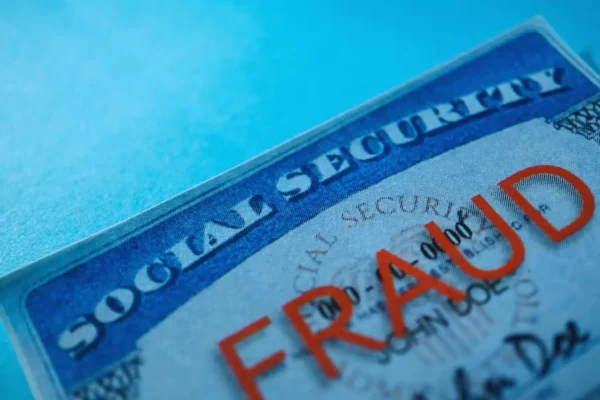
Child Identity Theft: What It Is and How to Prevent It

As a parent, you’re always trying to protect your children from the bumps and bruises that life will inevitably throw at them. You also do your best to make decisions now that will set them up for success once you’re no longer there to watch out for them. You hold their hand while crossing the street, kiss their boo-boos when they fall down, and do your best to make sure they have access to as many academic and financial opportunities as possible.
But one thing you might not have on your radar: identity theft. Unfortunately, identity theft is a real concern for children under the age of 18. In fact, a recent study by Javelin found that 915,000 children were victims of identity fraud between July 2021 and July 2022. Even more worrying is that children under seven years of age are the most likely to be targeted. Here, we’ll cover what child identity theft is, how it happens, what to look out for, and how you can protect your family.
What is child identity theft?
Child identity theft occurs when a thief uses a child’s personal sensitive information to access services or benefits or to commit fraud. Pieces of information thieves commonly use include a child’s social security number, name and address, or date of birth. Using these components of your child’s identity, a thief may access services or commit fraud. For instance, they may apply for government benefits, open a bank or credit card account, apply for a loan, sign up for a utility service, or rent a place to live.
Because it’s less likely that parents will check to see if their child has accounts open in their name, child identity theft can go undetected for years. As a result, the younger the child, the more likely they are to be targeted for identity theft.
How does child identity theft happen?
There are a variety of ways child identity theft can occur. It could be as simple as leaving your child’s social security card in an unsecured location, or as hard to prevent as sophisticated hackers breaking through the cyber security defenses of your child’s school. Below are a few of the most common that child identity theft can happen.
Parent Social Media Use
Child identity theft can happen to anyone, and often occurs through the careless sharing of personal information on social media platforms. Parents might not think twice about posting photos of their child with their full name and birthday, but identity thieves can easily use this as a starting point to begin guessing passwords or security questions to find out more information.
Child Social Media Use
A report released in 2021 found that approximately 32% of parents of children between the ages of seven and nine reported their child used social media, while almost half of parents of 10-12 year-olds reported the same. While there are benefits of using social media for children—connecting with friends and family, educational content—it can also be risky for younger children. Even as parents, we may unknowingly provide access to personal information— children are even more likely to share more data online than they should.
Hacking Educational Institutions
Another way thieves may gain access to personal identifying information is through educational institutions. Parents usually don’t think twice about sharing their child’s social security number and address with schools, and many hackers have decided to take advantage of that trust. Every month there are over 5.3 million ransomware attacks, with 61% of those attacks targeting schools. In these attacks, hackers will often steal children’s sensitive information and hold it hostage until the school district pays a ransom.
Family and Friends
It might seem unbelievable, but 73% of identity thieves are known to the victim. It’s unfortunate, but relatives—sometimes even parents—friends, and neighbors that a child knows and trusts may use that trust to gain access to sensitive information. While an adult might think twice before giving out a password, a child is much less suspicious when an adult they know requests such information.
What are some signs of child identity theft?
As mentioned previously, many identity thieves target children’s personal information because it is less likely to trigger any warning bells. However, there are some warning signs of child identity theft that parents can look out for.
- Your child has an existing credit report. Minors usually do not have a credit history to generate a credit report unless their identity has been stolen.
- Your child receives bills in their name. This is obviously a red flag because it’s doubtful young children would have been able to open financial accounts on their own.
- Your child receives preapproved credit card offers. This is a sign that your child has a credit history, which they have likely not initiated themselves.
- Your child gets calls from a collection agency. This is a clear sign that someone has accrued debt using your child’s information.
How can I protect my family?
The prospect of child identity theft can be scary—especially since it’s not something parents can fully protect their kids from, no matter how hard they try. However, there are simple steps you can take to minimize your child’s risk of identity theft.
- Don’t share your child’s Social Security number. Although schools and doctor’s offices may request the information for their records, it’s generally not necessary.
- Store Social Security cards in a safe place. Don’t keep your kids’ social security cards in your purse, car, or an unsecured location in your home. If possible, it’s best to store Social Security cards and other sensitive information in a locked safe in your home.
- Ensure computers are secure. Choose a secure password for your home Wi-Fi network, and make sure your phones, computers, and antivirus software are updated frequently.
- Keep kids off social media as long as possible. The longer you can keep your child from using social media platforms, the less likely it is they will fall victim to identity thieves or have their information stolen.
- Teach kids proper digital safety. If it’s not possible to prevent your child from using social media, teach them how to protect their privacy. Warn them of the potential consequences of sharing personal information publicly.
- Check if they have a credit report. You can request a free credit report from any of the three major credit bureaus at AnnualCreditReport.com.
- Freeze their credit. Perhaps the most robust means to protect your child from identity theft is to freeze their credit until they come of age. This prevents would-be identity thieves from using their information to open accounts or access benefits in their name.
If You Suspect Identity Theft
Despite your best efforts to protect your children, it’s still possible that they may fall victim to identity theft. If you notice any of the warning signs, the Federal Trade Commission advises parents to:
- Report and close the fraudulent accounts. You should contact the companies where the fraud occurred, as well as the three credit bureaus.
- Report identity theft. You can report suspected theft to the Federal Trade Commission at Identitytheft.gov.
Stay Vigilant
It’s unfortunate, but approximately one out of every 50 children will be affected by identity theft each year. To help make sure your child isn’t one of those impacted, it’s important to protect their personal information, and be conscious of the data that you do share both publicly and with friends and family. Hopefully, the tips shared here will help make you aware of the dangers to look out for and the best ways to protect those you love from identity theft.


